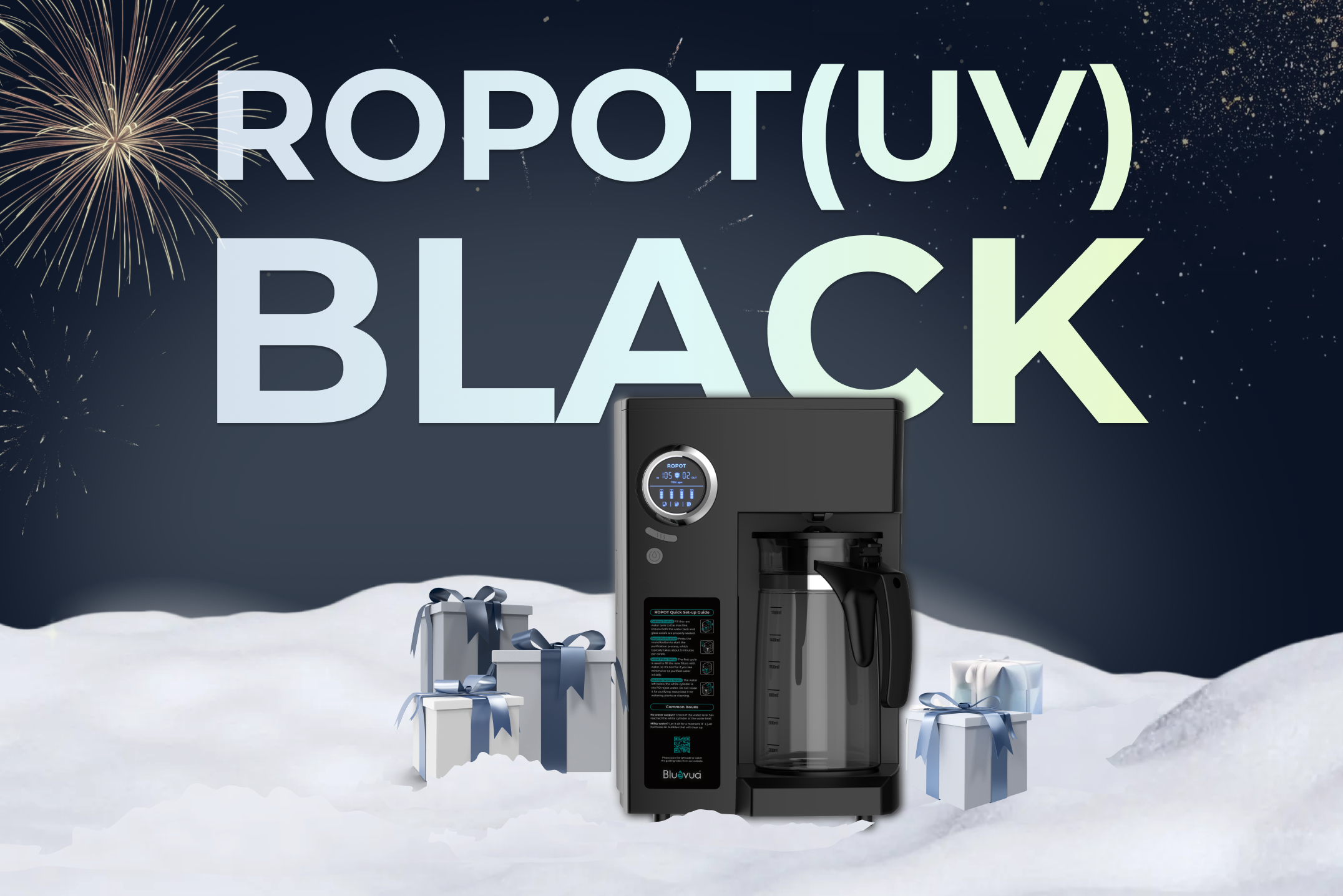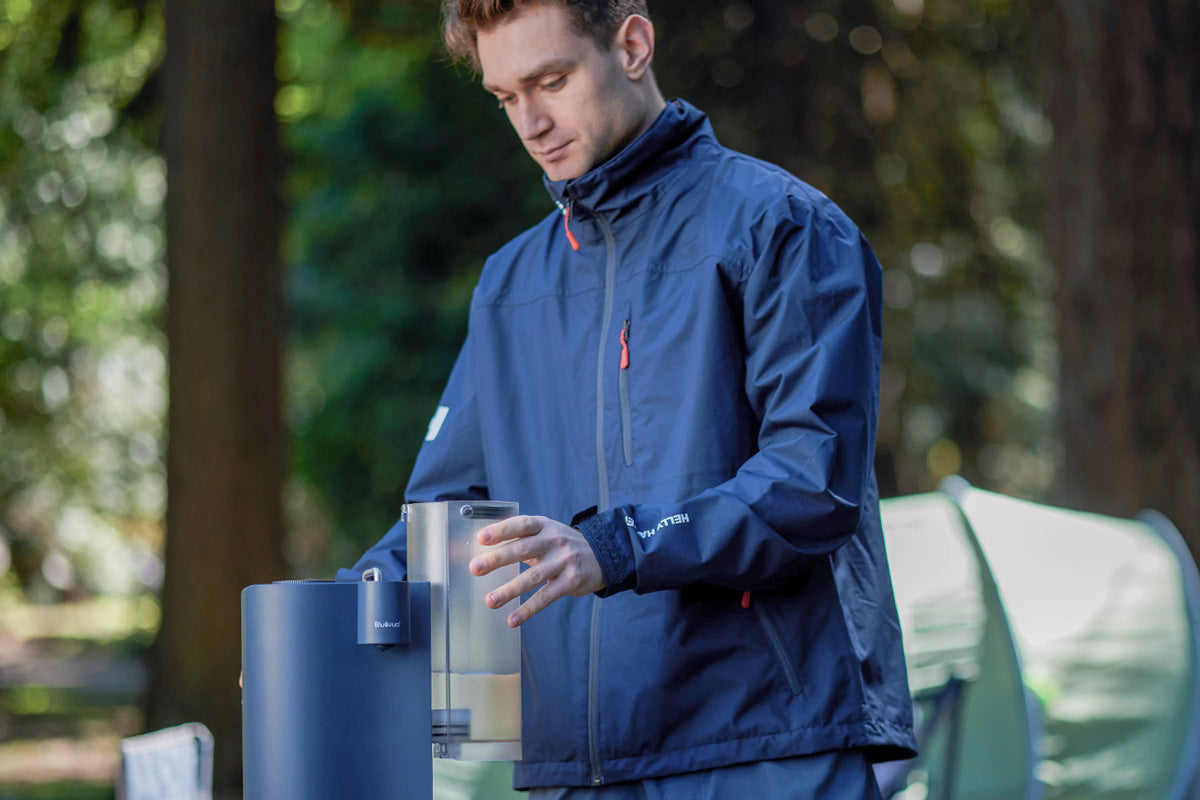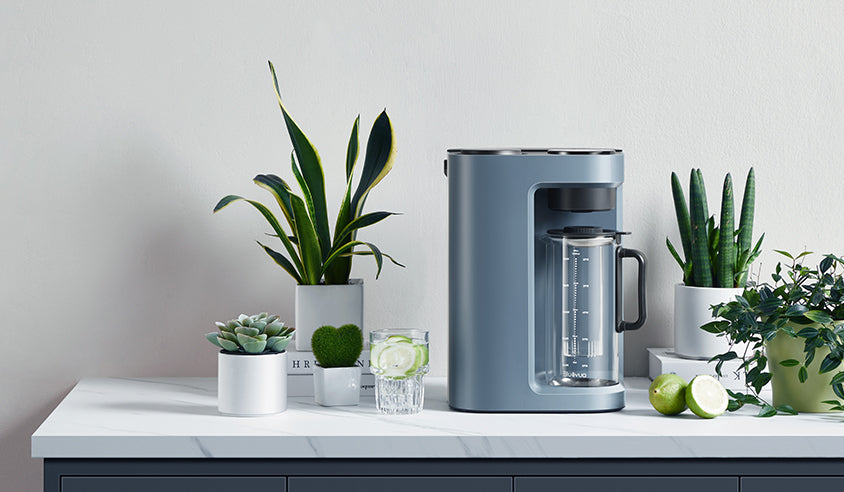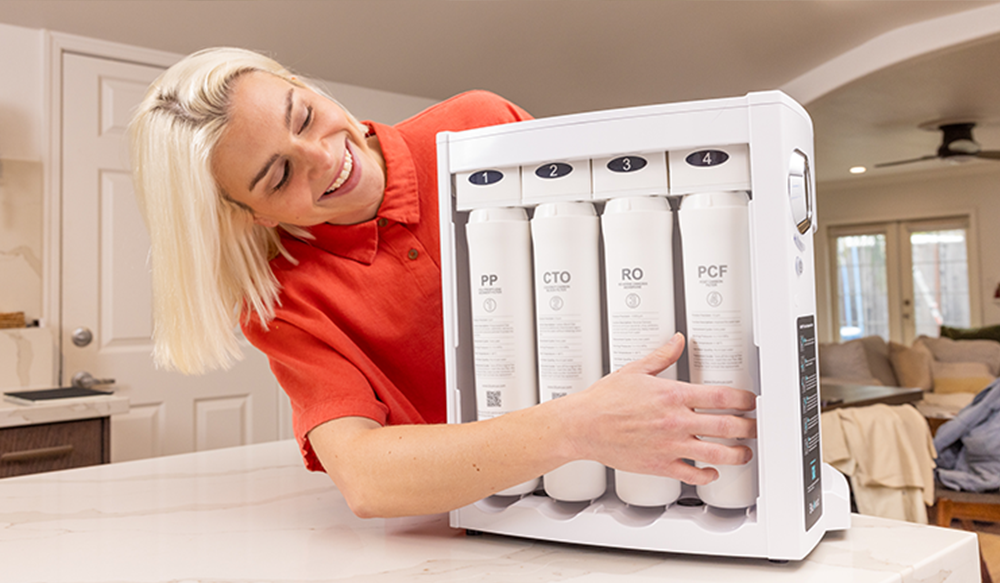Navigation
- Introduction
- How does Reverse Osmosis Keep Your Water Pure?
- Why Choose Reverse Osmosis?
- Things to Think About Before Going RO System
- Is RO Water Good for You?
- Is Reverse Osmosis Right for You?
- FAQ
Introduction
Looking for a simple way to make sure your drinking water is clean? Well, reverse osmosis water filters are the aspects you might want. They use a special filter to remove unwanted particles from your water to make it safe and have a good taste when drunk. In this article, we'll talk about how these systems work, weigh their pros and cons, and give you tips to help you figure out if they're the right choice for your tap water. Read more, learn reverse osmosis, and see if it fits your filtering needs.

How does Reverse Osmosis Keep Your Water Pure?
In actuality, Reverse Osmosis (RO) is one of the simplest and most effective methods for purifying water. It's akin to an ultra-fine net that only permits the smallest, purest droplets of water to squeeze through. The filtration accuracy of RO systems can reach an incredibly minute size of 0.0001 micrometers (μm), which is just a fraction of the width of a human hair, which averages about 70 μm in diameter. To put this into perspective, consider the diameters of common filter materials: sand filters can catch particles down to about 20μm, while standard carbon filters typically catch particles around 0.5 to 50μm in size. Even the average bacteria, which is about 1μm in width, is colossal compared to the openings in an RO membrane.
Basics
The key component in a reverse osmosis system is a very fine filter known as the semi-permeable membrane. The semi-permeable membrane functions much the same way as an ultra-fine sieve: It lets pure water molecules pass through while blocking larger, potentially harmful molecules like lead, chlorine, and bacteria.
What's in the Box?
A reverse osmosis system isn't just one filter-it's usually a series of filters that tackle different contaminants. Here's what you'll find inside most systems:
- Pre-Filters: These remove larger particles like dirt and rust, protecting the delicate RO membrane.
- RO Membrane: The heart of the system, where the majority of impurities are removed from the water.
- Post-Filters: After water passes through the membrane, it goes through additional filtering to polish the flavor and ensure quality.
The Filtration Showdown
But how well does this system stack up against others? It's all in the details. While other methods might be good at removing some contaminants, reverse osmosis is versatile and extremely efficient,capable of reducing the great mass of dissolved salts (ions), particles, colloids, organics, bacteria, and pyrogens from the feed water.
"Tasting" is Believing
The results are not just on paper. With reverse osmosis, you can notice the difference in your water's taste and clarity. Plus, since it's such a thorough filtration method, you often don't need to pair it with any other type of filter.

Why Choose Reverse Osmosis?
If you're sitting on the fence regarding getting a reverse osmosis water filter, then it helps if you know exactly what advantages it could bring to your daily hydration. Clean water is just the beginning.
Top-Notch Contaminant Removal
Reverse osmosis systems don't just purify; they excel at purifying a long list of undesirables out of your water. This covers the reduction of heavy metals like lead and mercury, nitrates, sulfates, pesticides, and more. That is peace of mind in a glass-to know you're drinking water that's properly purified.
Taste the Difference
Have you ever noticed a chlorine taste in your tap water? Reverse osmosis filters improve the taste of your water by removing such chemical tastes and odors. This translates to cleaner-tasting coffee, tea, and cooking water that may just make your food taste better, too.
Energy Efficient Water Purification
Compared to other systems like distillation, reverse osmosis uses a relatively low amount of energy. This means you can enjoy pure water without worrying about high electricity costs. Plus, newer models are becoming even more efficient, constantly improving over time.
Long-Term Savings
An RO system can be a savvy investment. While bottled water might seem convenient, it adds up in cost and creates plastic waste. With your own filtration system, you can have better-than-bottled quality water right from the tap, saving money in the long run.
Things to Think About Before Going RO System
Reverse osmosis systems come with a lot of pluses, but they might not be the perfect fit for everyone. It's important to take a step back and consider some practicalities before installing one in your home.
The Water Waste Factor
One of the most common complaints against reverse osmosis systems is based on wasted water. In a countertop module, 1/3 to 1/2 gallons of wastewater are produced for every gallon purified, but this byproduct doesn't necessarily have to represent waste. You can actually use this wastewater in your home for mopping floors, flushing toilets, cleaning cars, or irrigating non-sensitive plants, thus turning what appears to be useless into a very valuable resource. This practice will not only help in better utilization of water overall but also aid in reducing your water bills.

Keeping Up With Maintenance
RO systems need a bit of TLC to keep running smoothly. Filters and membranes don't last forever; they need to be replaced periodically to ensure top-notch water quality and prevent clogs and leaks. Make sure you're comfortable with this ongoing commitment and factor in the cost of replacement parts. The cost is only about $0.2 per day, which is much cheaper than buying bottled water.
Space and Setup
Not all kitchens are ready out-of-the-box for an RO system. You'll need space under your sink for the filters and tank, and some systems may require additional plumbing. The Bluevua Countertop Reverse Osmosis System does not require too much consideration of space issues and can be directly plugged in for use.

Upfront Investment
While upfront costs for RO systems are higher compared to simpler options like pitchers or faucet-mounted filters, it's an investment that pays dividends in water quality and longevity. The filtration accuracy of a reverse osmosis system is vastly superior, capable of removing contaminants down to 0.0001 micrometers-far beyond the roughly 0.5 to 10 micrometers targeted by basic filters. This means that not only do RO systems last longer, but they also provide a level of purification that is substantially more advanced, ensuring that your investment translates into the safest and purest drinking water over time.
Is RO Water Good for You?
The health benefits of clean drinking water are clear, but when it comes to reverse osmosis filtered water, there are additional factors to consider.
Healthy or Hypoallergenic?
For people with compromised immune systems or certain dietary needs, RO water can be a blessing. By removing impurities and allergens, reverse osmosis can provide a safe source of hydration. This is especially true in areas where tap water may contain harmful microorganisms or high levels of chlorine and fluoride.
Remineralization Solutions Healthier and Better Tasting Water
If there are any concerns about the mineral content in reverse osmosis water, it's important to note that not all RO systems are created equal. For instance, Bluevua's reverse osmosis water filters are thoughtfully designed with your health in mind. Understanding that RO water can interact with carbon dioxide in the air and become slightly acidic, Bluevua has innovatively equipped its filters with a specialized mineralized filter element. This cutting-edge feature has dual benefits: it carefully balances the pH level of the water, mitigating acidity while simultaneously enhancing the taste. Moreover, it replenishes the water with essential minerals that are beneficial for the human body. Such advanced engineering ensures that every glass of water from a Bluevua filter is not just pure but also improved for overall wellness.

Is Reverse Osmosis Right for You?
Ro system presents a powerful water purification option that excels at removing a wide range of contaminants and improving taste. While it demands an upfront investment and commitment to maintenance, the long-term benefits and savings can be significant. Moreover, daily mineral intake can be ensured by additional system features or dietary adjustments. Ultimately, whether RO is the best filtration method for you depends on your specific needs, health considerations, and environmental priorities. By taking stock of these factors, you can make an informed decision and enjoy the pure, refreshing water that suits your lifestyle.
FAQ
Q1: How often should I replace filters and the membrane?
Pre-filters usually run for 6-12 months, while post-filters could go for a year, the RO membrane is rated for 1-2 years of service, depending on both the water quality and usage.
Q2: How much water does a reverse osmosis system produce daily?
Most residential RO systems can produce between 50 to 100 gallons of purified water per day, which is generally more than enough for drinking, cooking, and other household needs.
Q3: What amount of pressure is required to run a Reverse Osmosis System?
Generally, most RO systems require a minimum water pressure of 40 psi. Still, some may require optimal conditions of about 60 psi. Bluevua Reverse Osmosis System comes with pump for optimal water pressure.





Leave a Comment
All comments are moderated before being published.
This site is protected by hCaptcha and the hCaptcha Privacy Policy and Terms of Service apply.